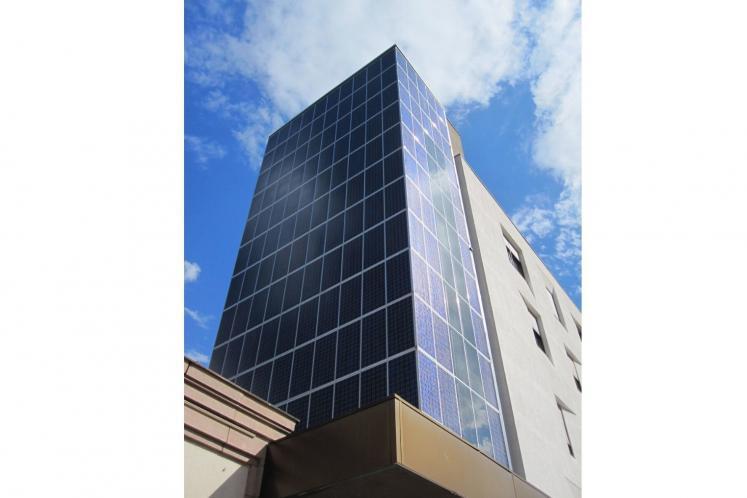Today’s energy market is rapidly transforming with the diffusion of new decentralized energy actors. In this scenario, buildings play a relevant role for the energy transition that European countries are facing. They are expected to shift from passive energy consumers to flexible energy prosumers able to produce and store energy, modify their thermal and electric demands and share data with other buildings connected in smart energy communities. We are already in this transition phase with several pilot projects ongoing.
Considering the electrification of most of our daily consumptions, photovoltaics is an ideal technology to support the transition. In next years, Building Integrated Photovoltaics (BIPV) is expected to gain popularity becoming a common solution for both roof and façade integration.
In the field of photovoltaics in buildings, designers have to face different challenges when starting a PV project:
-buildings offer a lot of area available for the installation of solar modules, but the orientation and inclination are often non-optimal
-near obstacles such as other buildings or trees could have a relevant impact on the solar irradiation
-the integration of photovoltaic modules in the building envelope has to be taken into account from the first phases of the design process (positioning of windows, mounting structure, etc.)
-BIPV is part of the envelop and the aesthetics have to be taken into account
-the economic feasibility of a BIPV project depends on a lot of complex aspects such as electric profile, cost of energy, costs for maintenance
-dimensioning of the Electric Energy Storage system (EES)
For these reasons many software, online tools, apps and databases to support the design process are continuously under development.
The new report of the International Energy Agency IEA-PVPS T15-09:2019 presents an overview of the current status of the available tools (BIPV Design and Performance Modelling: Tools and Methods). The authors compare several existing tools (27 software, 9 online tools, 4 apps) identifying key features, limitations and advantages.
Most tools:
- are suitable for the early-design phase
- implement an economic analysis
- are based on a 2D model for the calculation of the irradiation
- refer to crystalline silicon technology
Some tools:
- consider system losses in the calculations (temperature, soiling, etc.)
- focus mainly on residential or commercial applications
- refer to different technologies (not only crystalline silicon)
Few tools:
- include a database of local energy prices, incentives and feed-in-tariffs
- evaluate grid specifications
- include local regulations and policies
- take into account the impact on the indoor environment, emissions and heat island effect
- consider 3D virtual visualization
- compare alternative configurations of the PV system
The report could be used as a support for the selection of the most suitable tool depending on the requirements of the specific project.
Eurac Research is also committed to provide supporting tools for the adoption of PV solutions in buildings. A new BIPV database has been recently published including examples of realized buildings with PV and products available on the market. In parallel, an early-design tool is under development. It supports the designers to size the PV plus battery system and to choose the best position for modules, taking into account techno-economic properties of the PV system components, the building energy demand and geometry, the climatic context, the surroundings and other aspects related to the electricity cost variability. The method is based on an hourly calculation implemented in an optimization algorithm. The optimization algorithm selects the best solution out of thousand different configurations, according to the design goal (e.g. maximum economic outcome, minimum carbon footprint). This approach, taking into account the variability of the price of electricity, the weather conditions and the contemporaneity between the produced and consumed energy, has been proven to be effective for the design of sustainable PV+EES systems compared with traditional methods based on monthly and yearly evaluations.
As the buildings have a key role in the transition toward more sustainable cities, it is important to put effort in the development of effective tools for designers. Many researchers and companies are committed to this task, with the common goal of improving the sustainability of PV projects.




